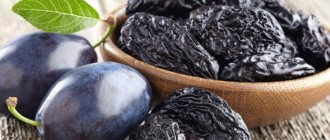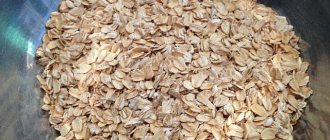Calorie content of marmalade lemon slices per 100 grams
The calorie content of marmalade lemon slices per 100 grams is 326.2 kcal. In 100 g of product:
- 0.11 g protein;
- 0 g fat;
- 81.1 g carbohydrates.
To prepare this sweet, molasses, sugar, agar, citric acid, dry lemon juice, dried egg white, flavorings, sodium lactate and curcumin are used.
Thanks to the presence of marmalade in agar, lemon slices are rich in iron, iodine and calcium. Lemon juice used to produce sweets is enriched with vitamins B, C, PP, E, and minerals manganese, calcium, sodium, phosphorus, and iron.
Chewing marmalade
People who prefer desserts that are not too sweet choose chewing marmalade, the calorie content of which ranges from 338-400 kcal per 100 grams. Another plus is that the treat does not stick to your hands.
The composition includes molasses, sugar, citric acid, gelatin, pectin and a wax-fat mixture (90% vegetable fat and 10% wax). The latter is needed so that the sweetness has a shiny and non-sticky surface.
Dessert is a good substitute for chewing gum after eating, as it cleans and whitens teeth.
Homemade marmalade recipe
To create apple marmalade you will need:
apples (3 pcs.), gelatin (tablespoon), cinnamon powder on the tip of a teaspoon.
Preparation: Cut the peeled apples into slices and place in the microwave for 10 minutes. Beat the prepared apple slices into puree, cinnamon and undiluted gelatin. Pour the resulting mixture into molds and place in the refrigerator. The calorie content of the treat will be no more than 60 kcal per 100 g.
It is permissible to use not only apples, but also pineapples and even pears in making homemade chocolate. It is important that the fruit is fully ripe.
From all of the above, we can draw the following conclusion: you can eat marmalade on a diet, but only natural, top-grade ones from producers who have proven themselves well, or you can prepare it yourself.
Author of the article: Terekhova Elena
Varieties of marmalade
There are many ways to make marmalade. Calorie content per 100 grams depends on the type of treat. At a minimum, one should distinguish between jelly marmalade, jelly-fruit, fruit and berry, chewing and sandwich. There are also natural products and inexpensive options that are made using various additives.
Now about the energy value. The stereotype about the low value arose about thirty years ago, when marmalade was natural and its calorie content was really only 220-270 kcal per 100 grams.
Today, manufacturers use flavor enhancers, flavors and preservatives, which not only call into question the usefulness of the product, but also increase its nutritional value. The calorie content of marmalade in sugar, in chocolate, with fillings ranges from 350-450 kcal or more, depending on the ingredients.
At the same time, there is no fat in marmalade, which gives it an advantage over most other desserts. It is sweet enough that you can't eat too much of it, and one cube weighs about 15 grams and contains 35-60 kcal.
Calorie content of worm marmalade per 100 grams
The calorie content of worm marmalade per 100 grams is 330.2 kcal. In 100 g of product:
- 3.63 g protein;
- 0 g fat;
- 77.1 g carbohydrates.
This marmalade is enriched with vitamin C, which has a beneficial effect on the condition of the heart and blood vessels, and helps to activate the immune functions of the body. Eating sweets normalizes the functioning of the nervous system and helps prevent stress.
Read: Calorie content of steamed cod
At the same time, we should not forget that worm marmalade contains a lot of unnatural flavors and dyes, which can exacerbate diseases of the stomach, intestines, pancreas and gall bladder. Sweet acids have a negative effect on tooth enamel and provoke the development of caries.
Sandwich marmalade
This delicacy, as the name suggests, is intended to be spread on bread, and therefore looks like a bar similar to butter.
The structure is slightly different from regular marmalade: the sandwich version is a little softer and easily spreads on the surface of the bread. But the caloric content is approximately the same - 310 kcal per 100 grams. However, the remaining components of the sandwich should be added to this figure, and if you are watching your figure, then God forbid that this is yeast-free bread with bran, and not a fresh bun greased with butter.
Jelly marmalade: calories
Jelly marmalade is more delicate in consistency, while dry agar-agar (seaweed) powder is often used as a thickener, in addition to pectin. The composition of jelly marmalade also includes sugar, molasses, fruit essence, food coloring, citric acid, and flavorings. Jelly marmalade based on agar-agar has a brighter color and a beautiful break.
The calorie content of jelly marmalade depends on the composition and can be from 280 to 350 kcal; jelly marmalade is called a carbohydrate dessert, since the protein and fat content in it is zero, and carbohydrates in such marmalade can be from 75.0 to 80.0 g.
Derived from seaweed, agar-agar contains no calories; swelling in the stomach, fiber improves peristalsis, normalizing the functioning of the gastrointestinal tract, and facilitating the functioning of the liver. The main beneficial qualities of agar-agar:
- It is a source of iodine, which the body needs for normal functioning of the thyroid gland;
- The high content of vitamins B5, E, K and iron, calcium, magnesium, copper provides the body with these essential elements;
- Helps eliminate toxins.
Often, when making marmalade, agar-agar can be replaced with gelatin - this is a thickener of animal origin, which is extracted from the veins, cartilage and bones of animals (vegetarians should know about this). This replacement slightly increases the calorie content of marmalade, since gelatin contains fats, but excludes it from the menu of strict vegetarian diets. Useful properties of gelatin:
- Helps improve the condition of hair, skin, nails;
- Participates in strengthening the skeletal system and cartilage.
Chemical composition and nutritional value of marmalade
Marmalade is fruits and berries cooked in a special way, usually cooked with white sugar. Thickeners are added to the product to give it a solid structure.
Ingredients of the treat:
- Carbohydrates - the delicacy contains the most percentages of these components. They are in the form of glucose, sucrose, fructose, starch and other organic compounds.
- Pectin substances are fiber of plant origin.
- Gelling food additives, thickeners. Used for a non-caloric seaweed product: agar-agar or a highly nutritious substance of animal origin, gelatin.
- Natural or artificial dyes, flavors.
- Vitamins A, C, B2 and PP, protein compounds, dietary fiber and acids.
- Minerals, trace elements, including calcium, iron, phosphorus, potassium, magnesium.
Types of dessert:
- Fruit and berry marmalade is prepared from natural products with the addition of sugar and thickener. Apply apples, oranges, lemons, blueberries, strawberries, gooseberries, currants, other fruits and berries, as well as juice from them. Certain ingredients contain natural pectins, which harden the product without additional additives. For example, apples, citrus fruits, cranberries, plums, and quince have such properties.
- In jelly marmalade, agar-agar, pectin, and gelatin are used as hardening substances. Cheaper types are prepared from a mixture of flavorings, dyes and thickeners. Special gelling sugar, which contains pectin and citric acid, can also be used.
- Some types of treats resemble chewing gum. They are usually made in the form of multi-colored images of animals, figures, and symbols. Chemical thickeners and other artificial ingredients are also used for production.
The benefits of marmalade
Marmalade made from pectin is traditionally considered the most useful. Such sweets:
- reduce cholesterol levels;
- normalize the metabolism of carbohydrates and fats;
- accelerate the healing processes of burns and wounds;
- provide prevention of bacterial diseases of the gastrointestinal tract;
- cleanse the body of heavy metal compounds;
- normalize liver functions;
- improve gastric motility;
- restore the nervous system and strength after heavy mental and physical stress.
General information about marmalade
Depending on the preparation method, the composition of marmalade can vary significantly, as it involves the use of a different set of ingredients in production (pectin, agar-agar, flavorings and aromas, etc.).
The number of calories in marmalade also largely depends on the technology of its production. If previously only natural ingredients were used in preparation, now production involves the addition of various preservatives and flavors. And while such additives have a positive effect on the appearance and taste, the same cannot be said about the calorie content and benefits of the product.
DIY low-calorie marmalade
If the answer to the question of how many calories are in marmalade scares you away from the rack with sweets, but you still really want to treat yourself to marmalade, try making such a delicacy yourself. 100 grams of this dessert contain only 60 kcal! For this you will need 3 medium sized apples, 1 tbsp. l. gelatin or agar-agar, a pinch of cinnamon.
The fruits need to be baked, the pulp separated from the skin and the core containing the seeds. Beat the pulp with a blender or mixer, add cinnamon or gelatin (agar-agar), stir thoroughly, fill the resulting mass into molds and cool in the refrigerator.
There are incomparably more useful substances in such marmalade than in a regular store-bought or chewing delicacy, but there are many times fewer calories. Bon appetit!
Marmalade for weight loss:
The main advantage of marmalade over other sweets is its low calorie content, which makes it safe for weight loss. However, it contains sugar, albeit in small quantities, so you should not abuse this delicacy.
In addition, the ability of marmalade to cleanse the body of harmful substances, including salts and toxins, cannot but affect the functioning of the body and the cleansing of the digestive system, which will begin to work normally and will get rid of breakdown products much faster, preventing them from becoming into fat deposits.
Considering the diuretic properties of marmalade, consuming it can avoid the formation of swelling and prevent the accumulation of excess fluid in the body. And nutrients and vitamins will improve metabolic processes, which will also contribute to weight loss.
Marmalade in the diet of those watching their figure
Compared to many other sweets - cakes, pastries, candies and chocolate - marmalade is a fairly light and harmless product. Of course, fresh fruits and berries are much healthier, but sometimes you want variety. In this case, you need to give preference to natural fruit and berry marmalade, the calorie content of which is lower than other types, and the composition is the most natural. In the store, you should carefully study its components: often high-quality fruit and berry marmalade based on applesauce or other pectin-rich fruits is more expensive than its analogues with artificial thickeners and having only juice or even color from the fruit. But such a dessert will not harm either the figure or the digestive tract. Or you can prepare the marmalade yourself, which will allow you to control all its components. By using sweet fruits, you can do without sugar, which will reduce the calorie content of marmalade and the level of carbohydrates in it. Of course, it may not look as appetizing as a store-bought one, especially for molded marmalade, but it will be completely natural, which will eliminate concerns about your health.
Calories, kcal:
Proteins, g:
Carbohydrates, g:
If fruit and berry marmalade is produced in accordance with GOST 6442-89, this is the highest indicator of product quality. When choosing fruit and berry marmalade, pay attention to the appearance of the sweetness. The product is of the correct shape according to its variety, the mass is viscous without lumps or veins. If fruit and berry marmalade is covered with confectionery glaze, the surface of the candy should be glossy without a whitish coating. Diabetic marmalade is not coated with sugar. The packaging in which the marmalade is stored is without damage. Be sure to check the expiration date of the product.
Types of marmalade
Currently, there are several types of marmalade, the most common of which are jelly, chewing, jelly-fruit and fruit-berry. In addition, the product that is manufactured industrially is divided into 2 main categories. Natural types of marmalade, which are produced by the traditional method of gradual evaporation of the fruit mass, belong to the first category. The second is represented by less expensive products using all kinds of additives.
Natural marmalade, which is a healthy product, is made from fruit puree with the addition of a small amount of granulated sugar. For example, in England it is customary to make it from oranges, and in Spain marmalade is made from quince. Meanwhile, in our country, natural marmalade based on apples is considered the most common. In addition, there is often a delicacy made from apricot or plum puree.
Video about the benefits and harms of marmalade
After watching this video, you can learn about the calorie content of marmalade, what benefits and harm it can cause to our body.
We also highly recommend reading about the calorie content of grapefruit. Or maybe you are a fan of funchose? Then hurry to find out how many calories it contains. Or maybe you like beets? Then an article about its calorie content will be useful to you. And be sure to pay attention to the article about the calorie content of raisins.
So we learned all about the calorie content of marmalade. Many did not know that this delicacy can be not only healthy, but also dietary. In addition, it can be easily prepared at home. Did you know about the properties of this product? Do you like marmalade? Have you ever tried a natural delicacy? Share your opinion and experience in the comments!
Author of the publication
Popular myths about the product
Many years ago, many enterprises produced marmalade in our country. It was then that the debate about the calorie content of this product first began. It had to be produced in strict compliance with standards, using only natural ingredients. This is where the most popular myth regarding the benefits and harms of marmalade for the figure comes from.
Once upon a time it was really useful and did not have a high calorie content, only 220 per hundred grams. But then it was produced on the basis of fruit purees and juices, adding only natural dyes. And for thickness, an extract from algae was added.
At the moment, it is difficult to talk about the usefulness of marmalade, because it is impossible to find a real natural product. We began to use various flavors, flavor enhancers, additives, and preservatives. The nutritional value also increased, from 220 to 425 calories. Instead of healthy fruits, the ingredients now include flavor substitutes and bright chemical dyes.
This product may not be brightly colored. Its color will be dull, its shape will be simple and elastic. The maximum permissible caloric content of marmalade of the highest category is no more than 330 calories per hundred grams.
What are the benefits of marmalade?
It is important to understand that only natural, high-quality marmalade can bring any benefit to the human body. It is the natural ingredients that are used in the preparation of the delicacy that endow it with benefits and nutrients.
So, if you correctly use high-quality marmalade from natural ingredients, you can get the following benefits:
- Intestinal peristalsis is activated. This prevents the problem of constipation.
- Adsorption of waste, toxins, radionuclides, salts of heavy metals, and fats occurs. They are eliminated from the body naturally.
- The absorption of cholesterol is prevented, thereby preventing the appearance and development of atherosclerosis.
- The functioning of the liver and pancreas is significantly improved.
- The structure of the skin, hair, and nail plates is restored.
- The body is saturated with vitamins PP and C.
- The feeling of hunger is eliminated, so marmalade is often used as a snack.
- Improves brain activity and memory.
- Has an antidepressant effect on humans.
- May relieve mild hangovers.
If agar-agar was used in the preparation of marmalade, then the delicacy will have a supply of iodine and transfer it to the human body. In the case where fructose and not granulated sugar was added, the product can be consumed by people suffering from diabetes. If you regularly consume natural marmalade within normal limits, its beneficial substances will contribute to the proper functioning of the intestines and the normalization of all types of metabolism.
In cases where a person is on a diet, you need to consume a special amount of marmalade per day, calculated by a nutritionist. This product can be consumed by everyone except those on a low-carbohydrate diet. This delicacy perfectly eliminates hunger and is suitable for those who find it difficult to give up sweets. But even marmalade should be eaten in moderation, otherwise a healthy product can turn into a harmful one.









